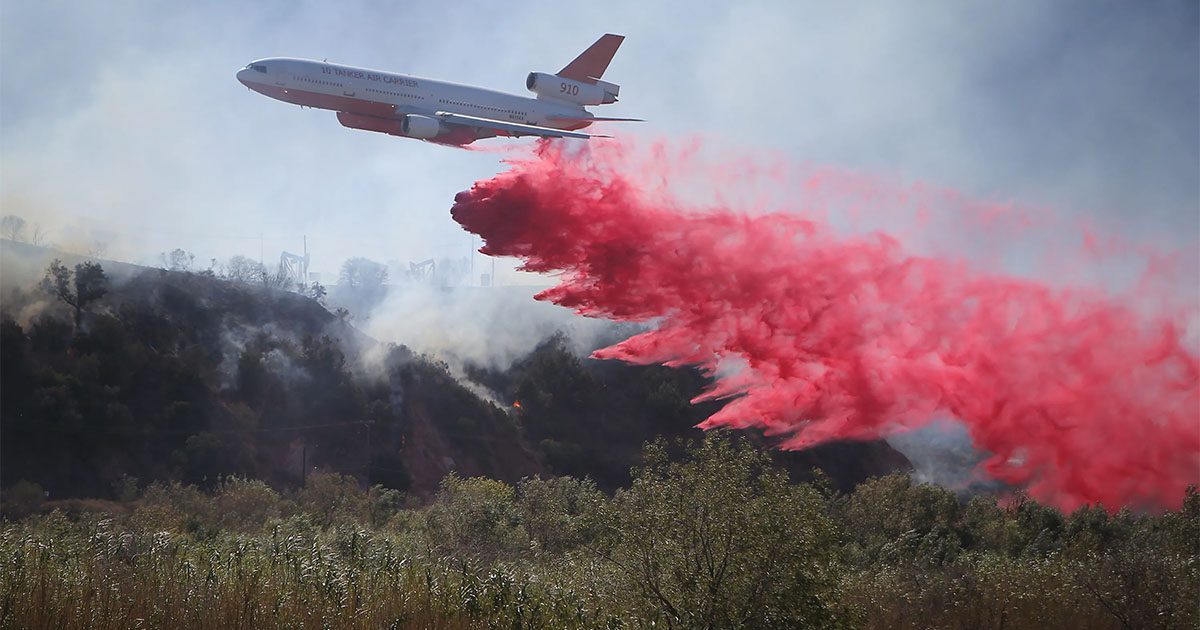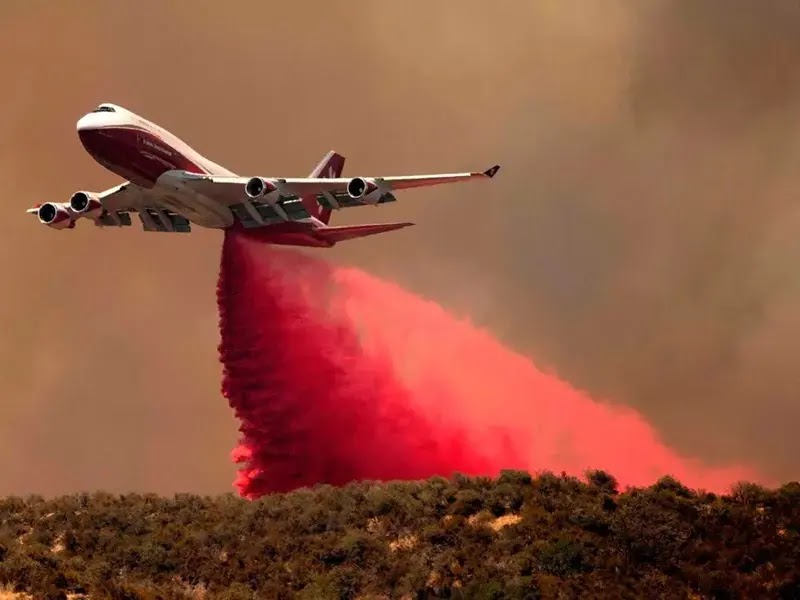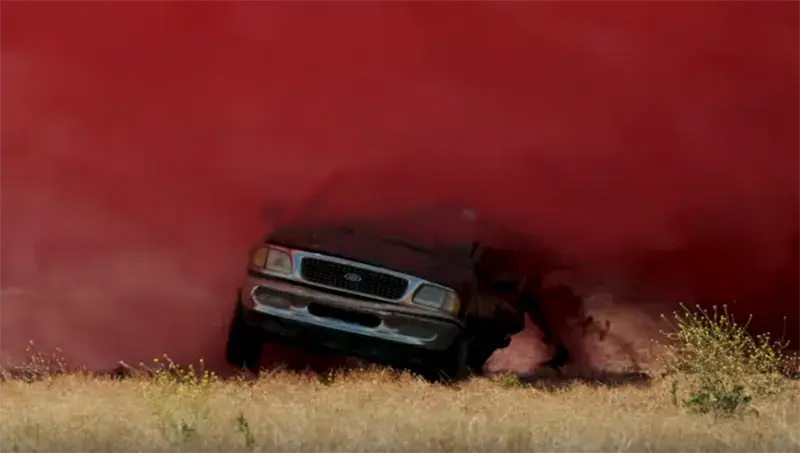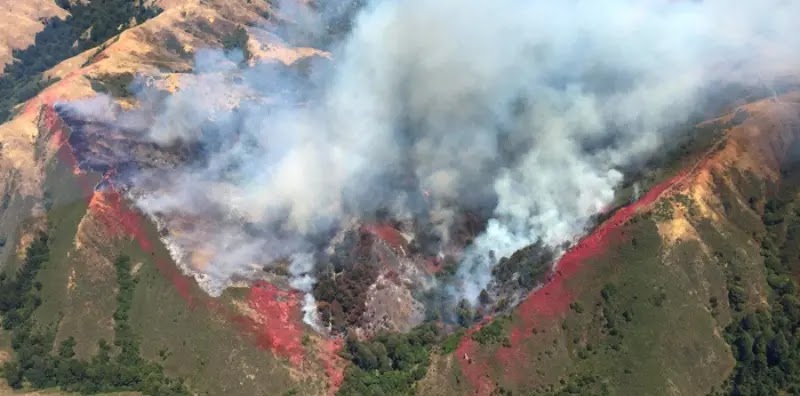
Almost every year, when temperatures start to increase, and the forests become dry, wildfires start to spread across the world. This problem has been increasing in recent years, and governments, along with many other organizations, are trying their best to counter the huge fire spread by multiple methods.
One of those methods is using airplanes, usually called Airtankers, to combat wildfires. These planes commonly use water to combat the wildfires, but sometimes they also use what looks like a “red water.”
If this was water, why is it red? What substances does it contain? And how do these substances help in extinguishing the fire?
Is it a Red Water?

To answer this question directly, I would say No. This is not water at all! Neither does it contain water. It is completely a different thing.
This red “chemical” is a fire retardant that is used to combat huge wildfires that water alone can’t combat. This chemical has proved multiple times to be a game-changer against fire.
But why is it colored red? I hear you asking.
The short answer is that it is colored a bright red to make it visible from the ground and the air. Why? To make it easier for the firefighters so they can see where the chemical is covering the forest and where they still need to splash some more.
But why red?!
As we said before, it is just guidance for the firefighters to help them spot the chemical, and to do so, the color must be clearly different from its surrounding. Of course, they can’t color it green and spread it over a forest!
Is it better than water? You keep asking!
Firefighters often use water to combat fire since it’s readily available, relatively affordable, and typically successful in cooling and rendering combustible fuel. Yes, water is a great firefighting weapon, but it has one problem.
It doesn’t kill the fire completely! Yes, water takes time to counter huge and powerful wildfires, and with a vast, dry forest combined with strong wind, water is just not enough. Moreover, the fire could make a “come-back” even if the area has already been splashed by water.
In this case, a more powerful delivery system than a hose splashing water is required in order to prevent more fires from igniting.
What is this Red Chemical?

As we said before, it is a fire retardant, and it is employed in aggressive wildfires to stop fires from spreading. This fire retardant is made by different companies, taking Phos-Chek as an example.
Phos-Chek is a major brand for that “red chemical” that is used in combating wildfires, as well as in residences and beneath fireworks displays. Despite the fact that this “red chemical” is not very dangerous, you still don’t want hundreds of gallons of it dumped on you from a plane.
What is the Composition of this Red Chemical?
Continuing with Phos-Chek as our example, the name of the product itself speaks of the composition. Ammonium “phosphate” is the active element in if, and its duty is to stop the flames.
How Does it STOP the Fire?

In contrast to water or firefighting foam, the long-term fire retardant is not intended for use on surfaces that are already on fire. So water should be used first to put out the fire, then the “red chemical” will be used.
It’s most commonly utilized to generate a chemical fire stop. Grass and other vegetation will not catch fire after being soaked with this red mud sludge.

There are also more uses for it besides putting out a wildfire. It is also used as a precaution in many places around the world. Let’s take the following example:
During its annual Fourth of July fireworks display, Pasadena in California employed eight tons of an uncolored variant of Phos-Chek fire retardant to protect heavily planted regions around the Rose Bowl and the Arroyo Seco.
Why uncolored? Because there is no need to track it. Because there is no actual fire, it is just a precaution.
Instead of being dropped from air tankers, the water and powder combination is sprayed from a tender water vehicle. Phos-Chek has kept many fires under control during the previous 20 years.
Many homeowners now request this method to protect their property and land. Many companies are providing this service. They will spray the uncolored chemical over your house or land to protect it from wildfire.
What do you think of this chemical? Would you use it to protect your house if you live in a place where wildfires are usual? Please leave your answers in the comment section below.
No comments:
Post a Comment